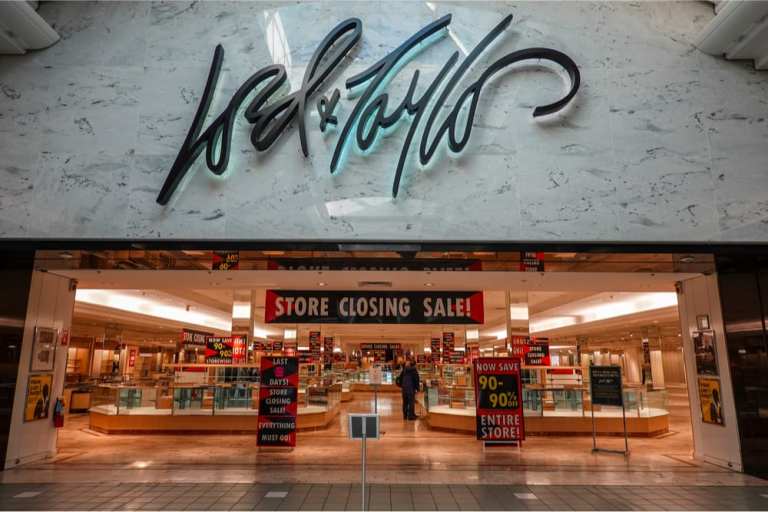
Lord & Taylor and Tailored Brands surprised absolutely no one with their bankruptcy filings Sunday (Aug. 2), but another spate of bad news has added new urgency to the question of who will survive in the beleaguered department store and apparel categories.
Known for upscale fashions and tourist-worthy holiday window decorations, the 38-store Lord & Taylor chain, along with parent company rental clothing retailer Le Tote, filed for bankruptcy Sunday afternoon in Richmond, Virginia. It became evident that its pandemic-fueled turnaround effort failed to generate enough revenue or promise for a future profit. It is the oldest U.S. department store, founded in 1826. Le Tote bought the rights to the company’s stores, brand and eCommerce site from Saks Fifth Avenue owner Hudson’s Bay Co. for $71 million last year.
Tailored Brands, parent of Men’s Wearhouse and Jos. A. Bank, was a victim of two market dynamics: the pandemic that shut down its stores and the stay-at-home culture that has made formal and casual office wear obsolete. It has 1,400 stores and 18,000 employees and had already announced plans in July to cut 20 percent of its corporate jobs and close up to 500 stores. In its filing it said it will try to slash its debt by at least $630 million.
“We remain confident that … our enduring commitment to help customers look and feel their best will allow us to overcome the challenges of COVID-19,” Dinesh Lathi, chief executive of Tailored Brands, said in a statement accompanying the filing in United States Bankruptcy Court for the Southern District of Texas.
“I don’t think any of these names are a great surprise,” Moody’s Vice President Christina Boni told Vogue Business, noting that the companies were already “near tipping point” and “weren’t well positioned to compete” prior to COVID-19.
Reports had circulated Sunday that Lord & Taylor stores had started liquidation sales. By the end of the day, the company made its filing. Attention now turns to the chain’s former owner, Hudson’s Bay Company. HBC currently owns Saks Fifth Avenue. In March the company went private under Richard Baker, its executive chairman. According to The Wall Street Journal, HBC exited businesses such as its German department-store chain Galeria Kaufhof and online flash-sale retailer Gilt Groupe to pay down debt.
The apparel industry has been rocked by the pandemic. According to analytics company GlobalData, worldwide sales of apparel will drop 15.2 percent this year, or nearly $300 billion.
“The 10 worst-impacted markets, in terms of value, will represent the vast majority of this total loss with mature regions suffering the hardest — the U.S. will account for more than 40 percent of all lost spend, which will contribute to more major chains filing for Chapter 11 over the next few months,” Honor Strachan, principal analyst with GlobalData, told the National Retail Federation.
The pandemic was certainly the catalyst for both bankruptcies and will be the driving force for anything that happens in the coming weeks. The national apparel and department stores that have avoided bankruptcy so far include Macy’s, which also owns Bloomingdale’s. It is trying to restructure its debt as well. Still some analysts took Tailored and Lord & Taylor to task for missing trends and failing to change their business model to a heavier eCommerce presence.
“The retailers who get this right are going to be big winners,” said The Motley Fool. “You know, if you look at a Lululemon and you talk about, are they going to be here in 15 years? You have to figure out, are they going to be able to pivot when maybe something else — people who do yoga are still going to wear yoga pants, but there might be a time where tights and yoga pants are not sort of de facto clothing items. Those trends shift, and the companies that could follow them — an example I’ll give is, for a long time, Gap was really good at this. They saw when denim would shift in, they saw when it would shift out, and they always had basics, but they sort of knew the difference. That’s a tricky ride. That makes any investment in a clothing retailer really challenging, because you can get it wrong. And if you get it wrong, you can be in trouble.”